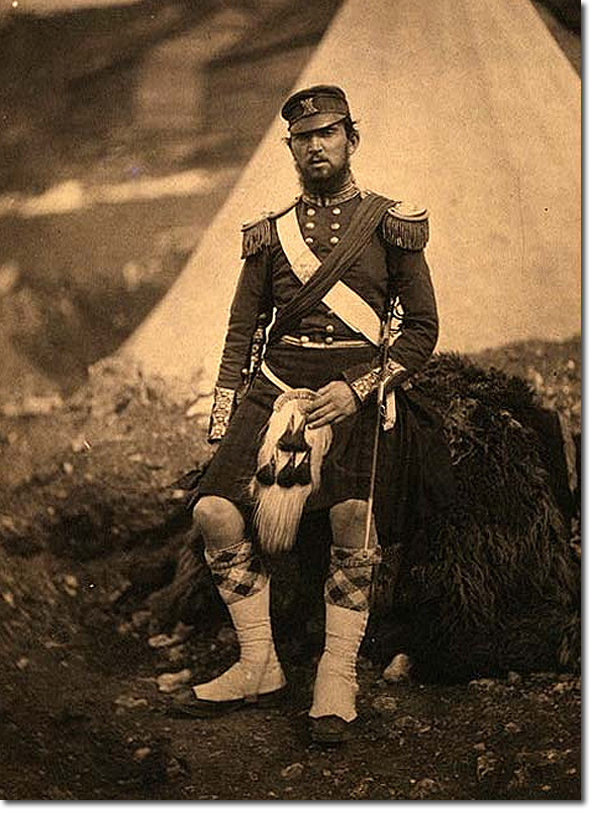|
|


|
| Roger Fenton's photo of a Black Watch officer in the Crimea gives a clear idea of the uniform which was often idealised in paintings. Fenton was in the Crimea between March and June 1855 and this picture looks as if it was taken in the summer of 1855. By this time men's beards were well developed. The officer is in his dress uniform but without the plaid on the shoulder, and without the feather bonnet. He has the undress forage cap which was distinguished in the 42nd by the black cap-band instead of a diced band worn by other Scottish regiments. The badge on the front is an embroidered version of St Andrew and the saltire cross. Other regiments had a thistle badge and the regimental number. The epaulettes have a somewhat droopy look about them as they slope off the shoulder and are not stiffened as some other epaulettes worn by staff and other regiments. The men wore white tufted wings for the period 1822 to 1855 but the officers, who at first wore stiff gold wings, returned to wearing epaulettes in 1830, except for flank officers. This officer is named as Captain Cuninghame and is a battalion company officer. The tops of his epaulettes are made up of narrow stripes of gold lace with a light of dark blue between. Inside the gilt crescent was an embroidered thistle badge. No rank badges were worn by captains and lieutenants, but there were subtle differences in the size of the bullion. His sporan has the undress type of black brushes instead of the gold tassels. He has white spats which are tight-fitting and rise up at the back of the calf. |
Armed Forces | Art and Culture | Articles | Biographies | Colonies | Discussion | Glossary | Home | Library | Links | Map Room | Sources and Media | Science and Technology | Search | Student Zone | Timelines | TV & Film | Wargames